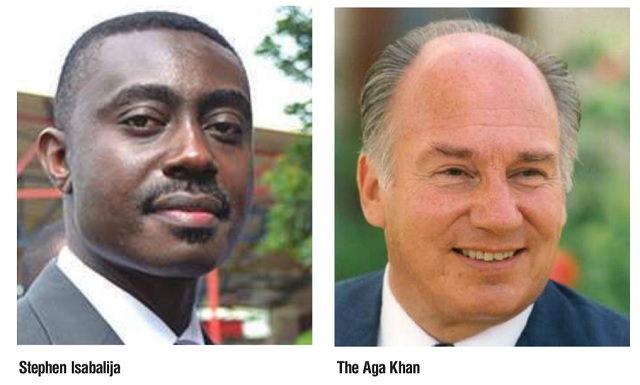In October 2009, the then Energy minister, Hillary Onek, described the Bujagali as “a bad project, over-delayed, and overpriced.”
Whatever the case, the Bujugali investors have to recoup their investment and the high return on it. Indeed, in 2013, the ventures profit after tax had hit US$66 million.
Museveni appreciates the developer’s justification of the high cost with the expensive loans and the high cost of construction materials they incurred. But he is equally determined to push for a better deal.
“We are going to engage the developers to find ways of refinancing this project,” he said as far back as 2014 in his State of the Nation address.
“With our oil money this should not be a problem. However, even before our oil money, we may be able to get cheaper money to pay off this expensive money borrowed by developers.”

Concern about cost of Bujagali power
Museveni also said the power generated from the new dams now under construction would be far cheaper with the 600MW Karuma costing 5 U.S. cents while the 183MW Isimba’s would cost 4 U.S. cents.
When he appeared on Capital Gang in January 2015, President Museveni again expressed concern about the cost of Bujagali power.
“We still have issues with electricity prices because of the distortion caused by the Bujagali project,” he said. “The concession for Bujagali power was not negotiated well. We will sort it out.”
Like Museveni, many consumers; especially industrialists say the high cost of electricity in Uganda has reached unsustainable levels and made local industries’ uncompetitive.
The cost of electricity amounts to about 40 percent of the total cost of manufacturers like steel makers who are now unable to sell their products because they are more expensive—an excuse Chinese contractors now handling major infrastructure projects are using to ship in cheaper supplies from China.
To deal with this high cost of Bujagali power, government last year toed with the idea of buying back the dam but the proposal attracted a lot of criticism with many saying it was an unfortunate reversal of the privatization policy.
Besides raising concerns that government could not raise that kind of money—over a billion dollars, economic experts said even if government had that kind of money, it was better off spending it constructing a new dam.
Following this, President Museveni tasked his technocrats to look for an investor that would allow to the reduction of the tariff.
Soon enough, commission agents got in touch with investors.
Karuma, Isimba to be costly
Museveni has said that power from Karuma will have a tariff of 5 U.S. cents per kWh.
But critics say that one of the factors that influence the tariff is something called “plant factor”; that is the average capacity utilisation of a dam.
For example, although Bujagali has installed capacity of 250MW, it does not operate at 100% capacity throughout the day.
Critics say the Karuma plant factor will be even lower in the initial years.
Dam-utilisation at Karuma when commissioned is expected to be 40% for the initial years. This is because, experts say, the electricity demand in Uganda will be low to consume all power that is generated.
At 40% dam utilisation in the initial years that grows to 60% over seven years, the effective tariff would be 20 U.S cents per kWh over 30 years – the same period as Bujagali, insiders say. This is because the loan repayment period would be shorter and capacity utilisation would be lower. Stretched to 50 years at capacity utilisation of 62.5%, the Karuma tariff would be 12.5 cents per kWh. Those who front these projects say, therefore, that Bujagali, which was built and is operated by a private investor, is competitive on the tariff.
Another problem for Karuma is its ever increasing price. The construction costs for Karuma dam were supposed to be US$1.4 billion for the dam alone. If you add the cost of the transmission line for 600MW, which is also part of the contract, the total bill goes to US$1.7 billion. The 187 MW Isimba, on the other hand was to cost US$530 million. However, an audit recently showed that the two dams would cost an additional US$ 500 million. That automatically increases the unit cost of a kilo watt at the dam. That is why some critics say that Museveni’s $ 5 U.S cents seems unachievable.
For these critics, if government is keen on reducing the Bujagali tariff, it should consider other options. One such option is, they suggest, for government to remove taxes on electricity generation, which contribute 23% of the Bujagali tariff (corporation tax and withholding tax on dividends). The investor would not be asked to calculate this tax into the tariff. If this happened, the tariff would fall to 7.5 cents, some claim.
With this, they claim, government would kill two birds with one stone. Government would reduce the tariff and not jeopardise the interests of the investors as seems determined to do in the Bujagali deal.
****
editor@independent.co.ug
 The Independent Uganda: You get the Truth we Pay the Price
The Independent Uganda: You get the Truth we Pay the Price




Where is NSSF Uganda? why cant we list this thing on the NSE and raise the $100m? NSSF uganda is a trillion shilling fund how can it honestly fail to raise Ugx330B??
its a shame really.